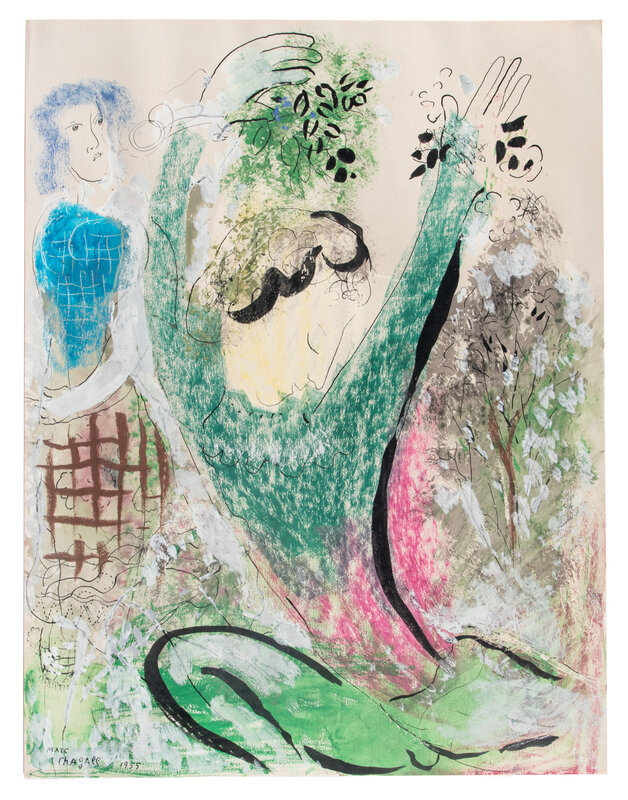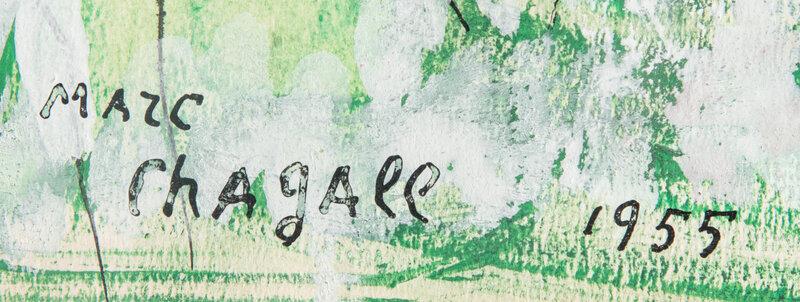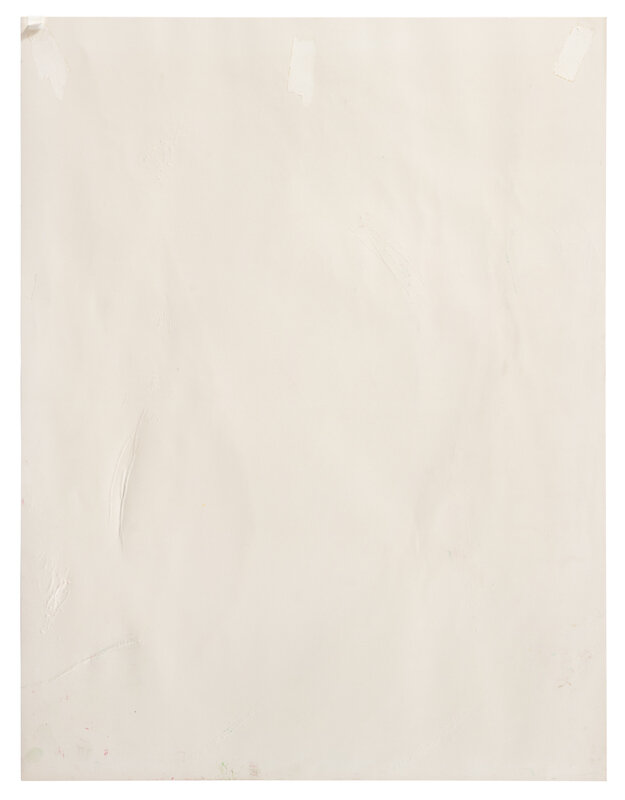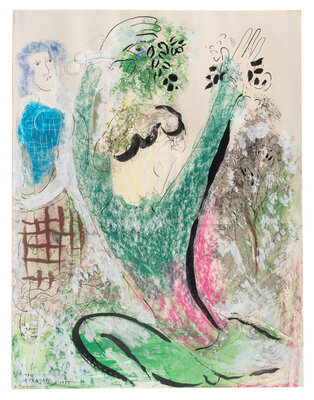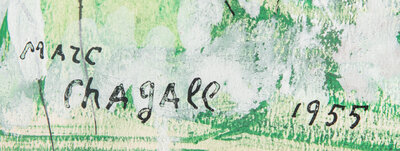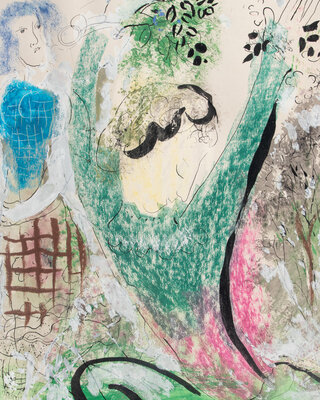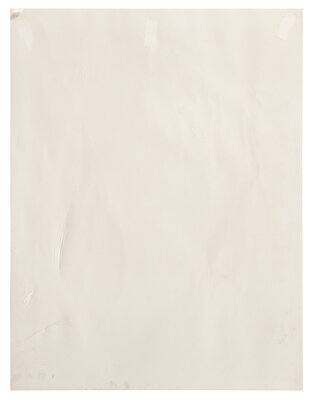Marc Chagall
(Belarusian/French, 1887–1985)
Dans La Nature (Danseur Vert), 1955
Sale 2087 - Impressionist and Modern Art, Featuring the Collection of John and Rosetta Gernon
Oct 28, 2024
12:00PM ET
Live / Philadelphia
Own a similar item?
Estimate
$150,000 -
250,000
Price Realized
$165,100
Sold prices are inclusive of Buyer’s Premium
Lot Description
Marc Chagall
(Belarusian/French, 1887–1985)
Dans La Nature (Danseur Vert), 1955
Pastel, gouache, and India ink on paper
Signed MArc/ChAgAll and dated (lower left)
Sheet size: 25 5/8 x 19 5/8 in. (65.1 x 49.8 cm)
This lot is located in Philadelphia.
Property Sold to Benefit Northwestern University.
The Comité Marc Chagall has confirmed the authenticity of this work.
Provenance:
R. Lewenthal, New York, New York.
Ohana Gallery, London.
Private Collection, Paris.
Literature:
Franz Meyer, Marc Chagall, Life and Work, New York, 1963, p. 761, no. 926 (illustrated).
Lot Essay:
Painted in 1955, Dans la Nature (Danseur Vert) incorporates one of Marc Chagall’s most iconic motifs. Performances of music and dance played an important role in the artist’s personal lexicon, which provided an infinite source of inspiration for his painting. The theme was of great significance to him as a poetic, visionary experience - a transcendental parallel to reality that indulged his imagination and propensity towards pure, lyrical escapism. The joyous atmosphere and sense of celebration inherent to music and dance appealed to Chagall’s colorful, life-affirming vision, and he translated this sense of energy and movement into bold, lively compositions such as the present work.
The present composition centers on a leaping figure clad in a green and red costume, who appears lost in his own beguiling movement. Another figure in blue floats to the left of the dancer, with a window below, as if to indicate an interior. Yet the entranced dancer is surrounded by green foliage and a tree bursting with white blossoms. This disregard for the rules of naturalism and perspective reflects the artist’s joy of creation and freedom of interpretation. Chagall’s confidence in his style and technique allowed for his deeply subjective approach to painting. In his later images of dancers, Susan Compton notes, Chagall: "wields his brush, loaded with color, to create a shimmering background, ignoring conventions of shaping pictorial space: instead, he paints a magical, swirling composition of figures and colors which effectively matches the dance of life" (S. Compton in Chagall (exhibition catalogue), Royal Academy of Arts, London, and Philadelphia Museum of Art, Philadelphia, 1985, p. 229).
With its fanciful, almost surreal composition, the artwork is an expression of his internal and highly individual vision, rather than an objective depiction of a dancer. The artist applied his mediums of pastel, gouache, and India ink in a variety of ways, ranging from staccato daubs, bold lines, and semi-transparent strokes, adding to the sense of effervescence and wonder. Ever the colorist, the rich shades of green dominate the artwork and bathe everything in an otherworldly light, so much so that the entire scene appears to have been wrested from a glorious dream.
Condition Report
Auction Specialist
